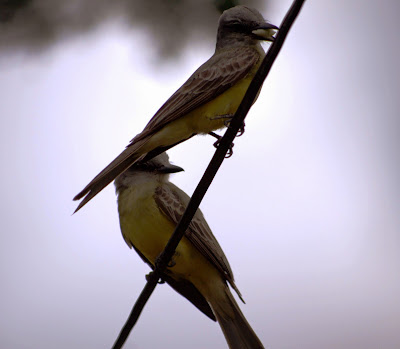Anyone who has had a therapeutic massage in a developing country realizes that the high standards in certification that make a massage beneficial in countries like the USA are absent in the developing world. Not everyone who claims to be a massage therapist has had good training, and getting that good training is not at all easy, for two reasons. The first is that licensed trainers providing well-established training programs are hard to encounter, and the second is that therapeutic massage services are regulated in most states of the US, whereas in Third World countries, just about anyone can claim to be a massage therapist with little or no training, and little regard to quality of the training programs.

The same issues exist with yoga practitioners and instructors. There are lots of people out there who have taken some yoga classes, or even a few classes in yoga instruction, but until now, no program exists with certified instructors in yoga practices directed at the Nicaraguan audience.
The
Seva Centers International site in Leon is the first comprehensive center in Nicaragua where massage therapy, yoga and other holistic practices are offered to Nicaraguans by US-licensed instructors. We are now celebrating the Seva Centers International joining the
GAIA program at FUNDECI. We are working together to bring more and better-trained yoga instructors and Thai massage therapists to Nicaragua. We are convinced of the benefits of yoga to the spirit, mind and body of the participants, and we extend to Seva Centers International in Leon our warmest welcome.
Would you like to become a licensed Ashtanga Yoga instructor? There is no better place than Leon, Nicaragua, to learn and participate with the local community. Interested people should contact
Seva Centers International for registration, yoga classes, and yoga instructor training. Please
let us know how we can get you involved in Nicaragua!
Eight
Limbed Practice of Yoga (Ashtanga Yoga)
What is the universal understanding of the
yoga tradition?
- That there is a Power greater than ourselves, that desires joy,
peace, and prosperity for us. We
were born with free will so that which is desired for us must be chosen by
us.
- Suffering exists in this world.
Through suffering we can choose to know and understand what our
purpose on this planet is and attempt to fulfill it for as long as we live,
thus reducing our suffering. Or
not. Duality exists.
Yamas (Spiritual Observances)
Moral principles to live by in order to develop the more profound
qualities of our human condition. We are to willingly and joyfully place
restraint upon ourselves in order to conduct ourselves .
Ahimsa—non-harm, violence and awareness cannot coexist; loving kindness
and compassion toward self and others as you think, act, speak throughout the
day.
Satya—Truth, being honest with self and others with our thoughts, words,
actions throughout the day.
Asteya—non-stealing, non-gluttony; It refers to the stealing that grows
from the fear of lack/ that we cannot create what we need. “We steal because we misperceive the universe
as lacking abundance” that there is not enough to go around or that we will not
receive reciprocally what we give forth.
Brahmacharya—using our energy wisely, following in the path of a HP or acting
with Spirit; it implies renouncing one’s
earthly desires to focus one’s attention on God/ Higher Power; following our purpose (dharma) in life;
maintaining focus (one way to maintain focus is breathing throughout yoga
practice, allowing the breath to come from the (chi) the center of the life
force.
Aparigraha—not coveting, it is the greed rooted in jealousy—the desire to be
something we are not or to possess that which is not meant for us to have at
that moment in time, it is comparing
ourselves to others; when ego gets in the way and makes us what we are not;
non-attachment; limiting one’s possessions to necessary things only since
unnecessary things “only distract our attention from the essential”. When we move on from this plane of existence,
what will it be holding you close to this plane that you fear letting go of?”
Niyamas (Self- Purification and study)
Saucha—(purity) practice of regular detoxification and purification of the
body. Neti use, purging (oral, bowels,
sweating), washing body, mouth, etc. Purification includes eating food that is
healthy and non-toxic to body. It must
be understood that food is the life source for our corporal selves and it
should “be eaten with reverence, gratefulness, and the attitude of nourishing
our physical bodies to serve” the HP.
“Our bodies are temples to the Lord”.
Santosha—(modesty) feeling content with what one has. It is the practice of accepting what happens
to us as meant to happen in order to offer us an opportunity for a life
lesson. It is not a predestined event
but rather a time to seek God’s will in the event. Simply put, it is a time to ask ourselves
“what am I suppose to learn from this event?”
This practice includes study, physical efforts, attitude checks,
perception checks.
Tapas—(burning) “it means to have a burning effort under all
circumstances to achieve a definite goal in life”. In yoga it means to heat up the garbage in
our bodies and burn it (practice of ujiyaa breath). It means to pay attention to what we eat, to
body posture, attention to breathing patterns off the mat as well (when we
walk, relate to others, when we feel anxious, angry, peaceful, etc.) Through
regular meditation practice one burns up mental toxins and through practice one
burns up physical toxins.
Svadyaya—(examination) to study oneself—all learning and reflection helps
one learn about oneself.
Ishvarapranidhana—(lay all your actions at the feet of God) After we do our best,
with sincere modesty we leave the rest to a Higher Power. It is giving God the glory for everything
that happens inour lives and the reason for the things to happen. It is the emptying oneself of desires in
order to fill oneself with the Source of all power.
(quotes from BKS Iyengar and DKS
Desikachar)
Asana (Postures)Benefits of:
Sun Salutations—awakens and warms the
entire body, begin connecting with the breath, begins the rhythm between
strength and flexibility work.
Standing Poses—connect us to the ground,
balance, promote emotional stability
Forward Bends—cooling effect, allow us to
let go
Balance poses—between movement and
stillness, to practice mindfulness, appreciation of one’s body; promote equilibrium and stamina; weight
bearing stimulates the bones in the legs, arms, and spine.
Backbends—opens our hearts to whatever the
universe has for us to accept; stimulates the central nervous system opening up
all the energy centers (chakras); tone the adrenal glands, liver, kidney,
pancreas; antidepressive.
Seated Poses—elongate the spine alleviating
pain in upper and lower body; strengthening the core in order to be able to sit
for prolonged periods of time in meditation
Inversions—reversing our relationship to
gravity energizes and stabilizes the whole body; oxygenates the brain to help
stimulate and restore neuron activity; balances endocrine system.
Twists—stimulate and balance GI,
reproductive, and eliminative systems; increase flexibility in hips, shoulders,
spine.
Supine Poses—body moves freely and serenely
through its full range of motion and savasana is the ultimate of the body being
free to move between body, mind, spirit.
Pranayama (Breath Control)
Ujjaya
breath—stimulates the energy channels, promotes mental clarity and focus, heats
up the body.
19
different kinds of breath control techniques for specific conditions
Pratyahara (Sense Control) it is a
state of mindfulness where you are aware of your surroundings yet sense that
you are not part of them because your mental and spiritual state are suspended,
serene, blissful. It means that even as
one participates in the world around them, there is a space between the world
and one’s responses to that world.
Ultimately, it is the ability to have such mental clarity and magnamity
that one can choose his/ her own
responses to the world instead of reacting.
It is how to choose to use one’s energy and not reacting to the variables that
surround him/ her.
Dharana (Concentration) the ability
to focus on one thing. This is most
difficult because it is in the human mind to lack concentration and, therefore,
to suffer greatly. If one can
accomplish focus or dharana for even a little bit, he/ she reduces his/ her
suffering by much greater than that.
Austerities are practiced in order to discipline oneself into
concentration. These austerities
are: solitude, silence, fasting, sexual
restraint, celibacy, and holding a posture.
Concentration is dramatically boosted by one’s faith and devotion toward
the object of concentration. In other words,
you can concentrate all your energies on completing a Step and that focus will
reward you with significant reduction of suffering.
Dhyana (Contemplation) Meditation
and enlightenment. “Enlightenment is…
Buddhists and yogis tend to agree that in a sense we area already
enlightened; we are already there. Enlightenment is really just a deep, basic
trust in yourself and your life.” It
is the stripping away the layers of decisions that have reflected our karma to
a neutral state of being where peace and wholeness can be revealed. It is truly understanding what your
in-dwelling spirit is all about after peeling away the layers of our
humanness. These are: (afflictions of the mind)
- Avidya—ignorance (which is experiential not conceptual)
- Asmita—ego
- Raga—attraction or attachment to worldly things (tangible/
intangible) which creates in us a pattern of acquisition thus giving us
the false security that our fragile existence is protected.
- Dvesha—attachment to objects of pleasure, thus seeking this
pleasure repeatedly even when it clouds the purpose (dharma) of our
existence and hide our in-dwelling spirit.
- Abhinivesha-- because of
dvesha and raga a cycle of outflowing of our energy and attention through
our senses has been created depleting us of energy which could be ours to
experience, to live in abundance, non-attachment, pure enlightenment. Fear
that our existence will cease with the death of our physical bodies.
Samadhi (Veridical Meditation/ Bliss) “the crown of all the aesthetic
spiritual efforts and exercises of a yogi and yogini. There are four stages to reach living in the
grace of God: argumentative;
non-argumentative existence; reflective; super-reflective. It means reaching Nirvana which translates to
mean “complete burning away”—obliteration of one’s individual identity and
mergence with God.
 |
| Ashtanga Yoga Instructor at Seva Center, Rebecca Hagman. Photo Rebecca Hagman. |







































